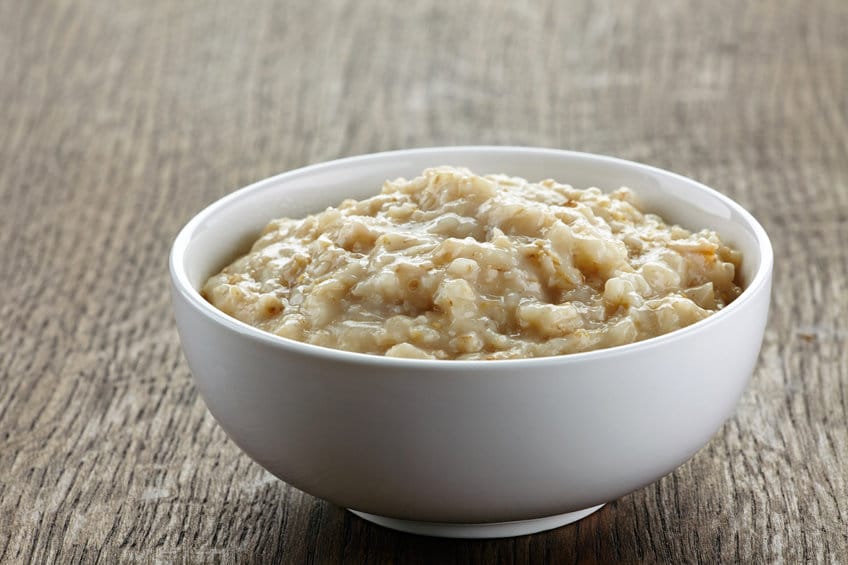By Kathy Driscoll –
For many, that classic box of oatmeal has been a reassuring pantry staple during the long months of the pandemic—right up there with rice and sourdough bread. Cooked in the microwave or more laboriously on the stovetop, maybe topped with maple syrup, brown sugar, walnuts, raisins, or fresh fruit—or not—oatmeal has been a versatile and inexpensive way to fill up on whole grains.
Generally rich in fiber, oatmeal is a hearty carbohydrate generally low in fat and high in proteins, vitamins and minerals, whether it is quick, rolled or steel-cut. One way or the other, they’re a no-lose proposition on the health front.
What oats aren’t, unfortunately, is exciting—probably never have been even though they trace their roots back to ancient civilizations. Scholars believe that oats were first cultivated thousands of years ago in the Near East and domesticated in the Bronze Age, spreading first to Northern Europe and later to America in the 17th Century. Renowned English wit Samuel Johnson probably nailed both their value and paradox when he wrote more than 200 years ago: “A grain, which in England, is generally given to horses, but in Scotland supports the people.”
Author and chef Roxana Jullapat gave a more modern twist on tale of oats recently in a Washington Post piece. “Oats are never the flashiest grain, never used to make the sexiest dish. They evoke times of hardship and are forever linked to Dickensian images of a famished Oliver Twist, pleading for a second bowl of gruel.”
In America, rolled oats picked up steam in the 1850s when German immigrant Ferdinand Schumacher developed a method for rolling oats with heavy steel pins at a mill in Akron, Ohio. Not surprisingly, Schumacher later got involved forming the Quaker Oats company, which cleared the way for widespread consumer oat production and consumption.
Whether quick, rolled or steel cut, oats generally start their lives as oat groats, which are oat kernels that have had the tough outer shell—the hull—removed. The next step determines whether they become steel-cut, rolled or quick oats.
The bigger question is which gives the greatest health kick? The difference in benefits between the three is minimal at best. Steel-cut oatmeal, also called Irish oatmeal, is made when oat groats are chopped into pieces with large steel blades. The result is oatmeal that takes longer to cook but has a chewier texture and a nuttier flavor–and has a slightly higher fiber content.
Old-fashioned or rolled oats, on the other hand, are oat groats that are processed by a steaming and flattening process. They take less time to cook than steel-cut oats but have a softer texture and a milder flavor. And quick or quick-cooking oats go through even more processing, by steaming, and then rolling even thinner. Other types of instant packaged oats might contain other ingredients like skim milk powder or sugar.
When it comes to wellbeing ROI, steel-cut oats may have a slight advantage because of additional fiber. They take a little longer to digest and absorb than regular old-fashioned or rolled oats. “That is a good thing – the longer they hang around in our intestines, the more good they can do,” say researchers at the University of Massachusetts Center for Applied Nutrition.
In terms of nutritional value, the difference between the three is, again, razor thin. A 2-ounce portion of rolled or old-fashioned oats contains 7 grams of protein, compared with 9 for steel-cut and 8 for quick cut. When it comes to fiber, steel-cut have a slight edge with 6 grams, followed by 5 for both quick and old-fashioned oats. And the same 2-ounce portion has 0 grams of sugar while the other two have 1 gram each.
Besides fiber and protein, oats contain another critical carb: beta-glucans which hold water. This gives oatmeal its smooth consistency, while helping to lower both “bad” LDL and total cholesterol at the same time. The beta-glucan also helps slow digestion, which helps stabilize blood sugar. Any package that lists a certified facility means the contained oats are also gluten free.
So, maybe the longer-cooking oats have a slight advantage. But almost any of the three core oatmeals are going to serve a body well. Plus, oatmeal lends itself to surprising creativity, whether in terms of toppings or recipes.
Boring be damned. Revere the power and history of humble oats. “Oats have fueled civilizations, celebrated the supernatural and in modern times, even replaced milk,” Jullapat proclaimed. “Our tendency to relegate oats to a microwave porridge overlooks the myriad ways in which they can be consumed.”











